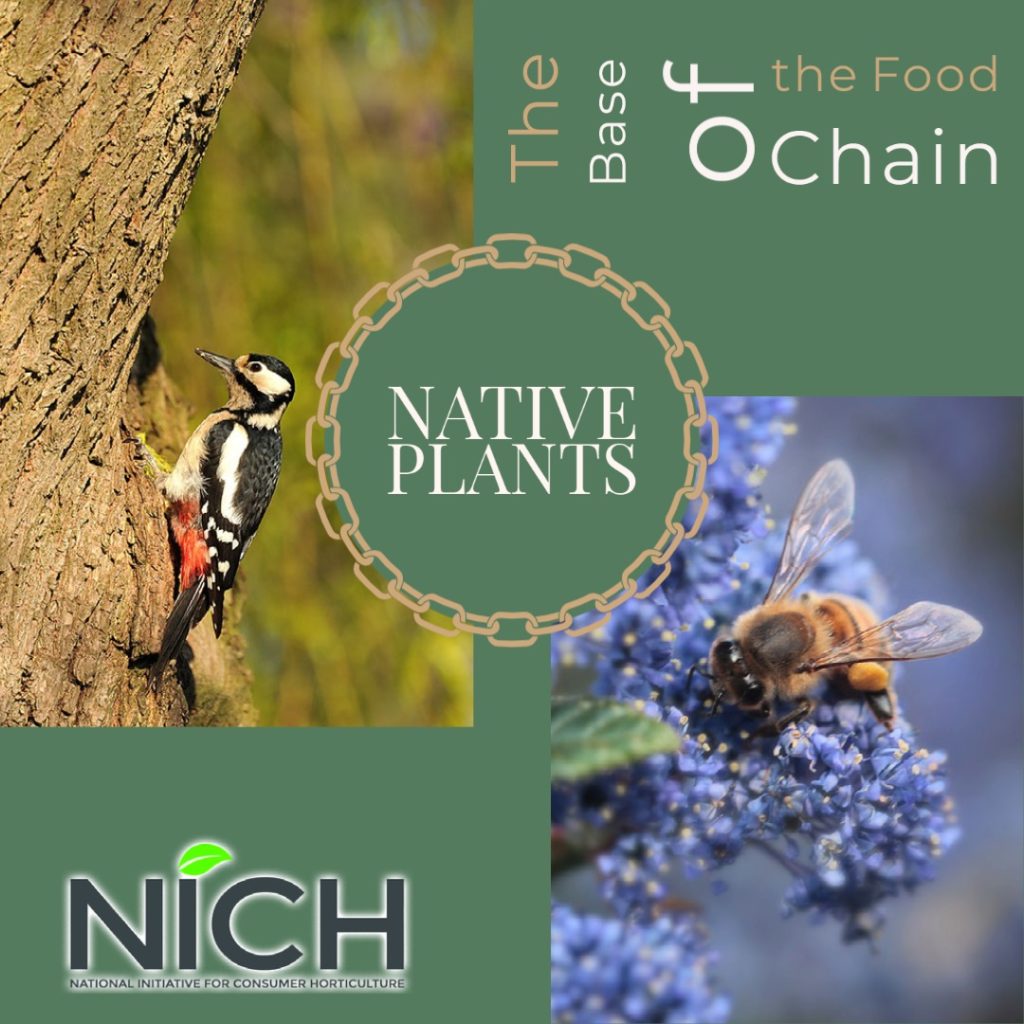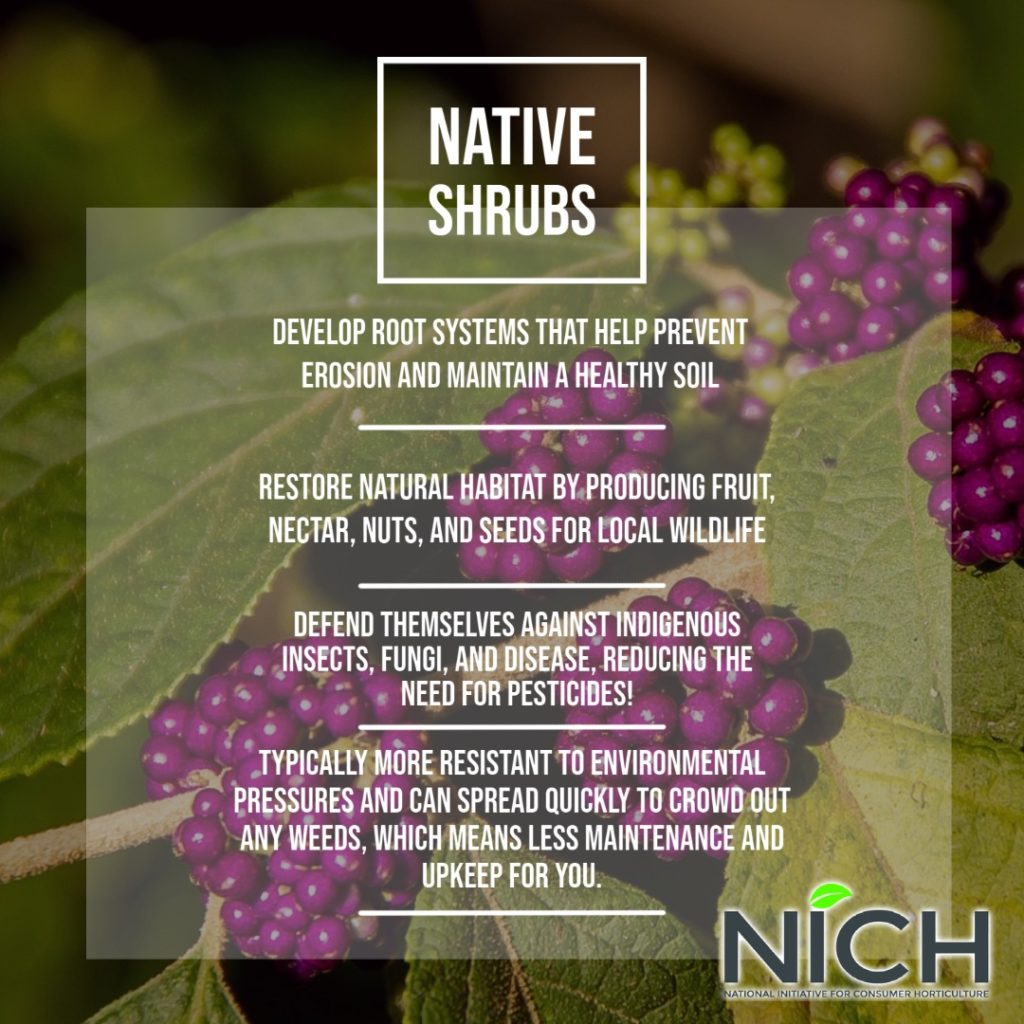“The beauty of a plant is not just the plant itself, but all of the other organisms it can bring into your garden.”
– Dr. Gail Langellotto, Oregon State University
If you love watching wildlife, you’ll love having native plants around because these are the plants that really bring in the bees, butterflies and birds. And because they’re naturally adapted to local climate and soils, native plants are great candidates for low-input and low-maintenance landscapes. Properly selected and established, natives can be beautiful, super functional, and largely problem free.
Native plants are the species which have been part of the balance of nature developed over thousands of years in a particular ecosytem or region. The word “native” is best used with a qualifier, such as a specific geographic region (native to Kansas) or ecosystem (native to the eastern deciduous forest). While a native species may range widely across the country, local populations of individual plants often exhibit important differences adapted to the local environment.
Native plants are at the base of the wild food chain. They have co-evolved with native insects, developing mutually dependent interactions and relationships, such as pollination and reproduction. Butterfly gardeners know they must put up with caterpillars, the larval form of the butterflies, eating their plants. This insect-host plant relationship is often more specialized and vital than many people realize. Most butterflies and moths, in their larval stages, feed predominantly on native plants, often just a few species. If those plants are not available, the butterfly or moth cannot reproduce. The monarch butterfly struggles in part because although its larvae can feed on any milkweed plant species, loss of native habitat has resulted in many fewer milkweed plants. Most gardeners can’t get native milkweed. The most widely available species, tropical milkweed, Asclepias curassavica, is not native and some research suggests that in certain parts of the country, it’s a problem because its extended growing season disrupts the butterfly’s natural migratory behavior.
Beyond butterflies, caterpillars are essential, protein-rich food for birds. Thanks to the research and books by Dr. Doug Tallamy, University of Delaware entomologist, we know that 96% of our land birds feed their babies exclusively with insects, mostly caterpillars. No caterpillars, no baby birds! With native plants, every gardener can plant critical habitat for local insects and birds. As people continue to convert more land to urban areas, gardens and landscapes will become ever more important to sustaining wildlife.
To learn about and purchase native plants for your garden, choose the most local sources of information and plants available. The American Horticultural Society provides links to every state native plant society. Find yours. You’ll be led to good references for what is locally native or not. You’ll meet new friends who share your interest and have experience with the plants. Native plant societies offer field trips to see plants in natural and planted settings, provide plant and seed swaps, support local nurseries and help spur awareness of these still little known plants.
Plant some natives, expect more life in your landscape and carve out time to enjoy it.
More findings on the benefits of plants can be found at consumerhort.org. When posting on social media, please use the hashtag #PlantsDoThat. Please feel free to share or adapt this article in your newsletter or other customer communications.
The National Initiative for Consumer Horticulture (NICH) is a consortium of industry leaders who are promoting the benefits and value of horticulture. NICH brings together academia, government, industry, and nonprofits to cultivate the growth and development of a healthy world through landscapes, gardens and plants — indoors and out.
Cammie Donaldson is the Executive Director of the Native Plant Horticulture Foundation and Florida Association of Native Nurseries, the largest network of businesses and professionals promoting and using native plants in the nation.







Leave a Reply